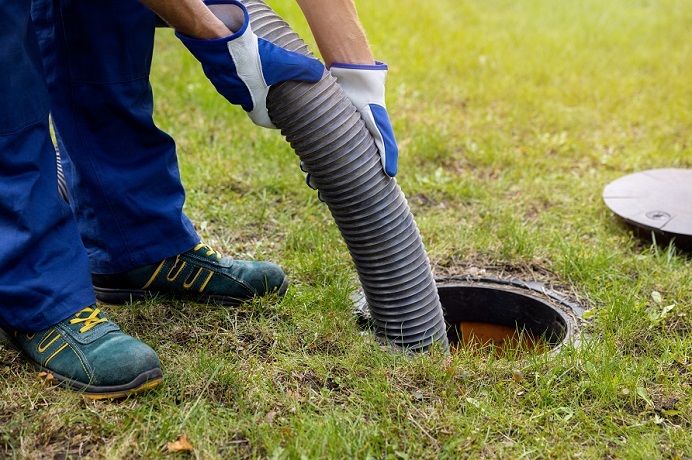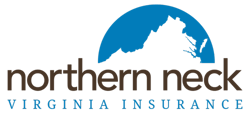
Depending on where you live, Virginia homes use various public sewer systems to safely disperse wastewater away from a residence and help protect human and environmental health. Homes in more rural locations without access to city sewage lines utilize a septic system.
As a water waste management system, your septic tank is at the top of your list of things in your home that you don’t want to break down. Septic tank damage can be unpleasant, messy, and expensive, and you may be wondering if your home insurance will cover your septic system.
How conventional septic systems work
Septic systems carry and disperse wastewater from the home through a conveyance line, a septic tank, a distribution box, and a drain field. The septic tank’s primary job is to separate liquid and solid waste. Solids convert to carbon dioxide, water, and other byproducts. The process is not entirely efficient, and solids will accumulate over time. Some solids create problems. Hair, vegetable waste, fats, oils, and greases are not readily digested by the bacteria in the septic tank and should be avoided as much as possible.
from the home through a conveyance line, a septic tank, a distribution box, and a drain field. The septic tank’s primary job is to separate liquid and solid waste. Solids convert to carbon dioxide, water, and other byproducts. The process is not entirely efficient, and solids will accumulate over time. Some solids create problems. Hair, vegetable waste, fats, oils, and greases are not readily digested by the bacteria in the septic tank and should be avoided as much as possible.
The conveyance line carries wastewater out of a home by gravity into the septic tank. Sewage systems on hilly sites need a pump to move wastewater through the system. The distribution box contains many pipe outlets that help evenly distribute the liquid wastewater to multiple trenches below the ground level. A drain field disperses wastewater into trenches below the ground surface, where the water percolates into the soil for the final removal of nitrogen and harmful bacteria.
Diagram courtesy of cliftonpark.org
How to avoid a septic backup
The average household septic system should be inspected at least every three years and pumped every three to five years by a septic service professional. Alternative systems with electrical float switches, pumps, or mechanical components should be inspected once a year.
To avoid damage to your septic system, learn where its components are located, and keep your car and anything heavier than your lawnmower off your septic tank and drain field. Do not use a garbage disposal and reduce the amount of fats, grease, and solids that could enter your septic system and clog the drainfield. Keep excess water from irrigation, significant rainfall, or drains off the drain field. Plant trees away from drainfields since tree roots can clog the field, intrude pipes, and cause the system to fail and back up. Only flush human waste and toilet paper.
All the water a household sends down its pipes ends up in its septic system. The more water a household conserves, the less water enters the septic system. Efficient water use, such as high-efficiency toilets, faucet aerators and showerheads, improves septic system operation and reduces the risk of malfunctions.
Does homeowners insurance cover septic system damage?
Standard homeowners insurance covers home sewer line damage up to policy limits when it results from damage due to a covered peril such as fire, vandalism, or severe weather, like hail, windstorms, and lightning. The most common damage to home septic systems results from normal wear and tear and lack of maintenance. For example, regularly flushing nonbiodegradable items into your septic tank will most likely cause septic system failure and is not covered by your home insurance policy.
Damage to a home septic system from lack of maintenance can include:
- Cracked or broken component lines caused by construction, normal wear and tear, or tree root intrusion.
- Clogging debris like cat litter, cigarettes, coffee grounds, flushable wipes, feminine hygiene products, and excessive hair.
- Grease from cooking oils and foods. In septic systems, fats, oils, and greases, or F.O.G., will tend to float, creating a film on top of the fluids in the tank, which presents clogging problems when present in large amounts.
- Killed microbes in a septic system that prevent digestion of waste. Killers include household chemicals, gasoline, oil, pesticides, antifreeze, paint, and high amounts of anti-bacterial soaps and detergents.
Service Line Coverage
You can purchase additional Service Line Coverage on top of your home insurance policy, which provides extra coverage for service lines that connect to and go out from your house, including the pipe that feeds to your septic tank. This endorsement can protect your septic pipes, other water and sewage pipes, power lines, internet cables, and natural gas lines.
Service Line Coverage can pay for damage to your sewer line from:
- Pressure from heavy equipment or vehicles
- Freezing temperatures
- Rodents, vermin, or insects
- Tree roots
- Regular wear and tear
- Mechanical or electrical breakdown
- Deterioration, decay, rust, or corrosion
THE NORTHERN NECK INSURANCE INTEGRITY PROMISE — We pledge to provide straight talk and good counsel from our NNINS Virginia insurance experts through our blog. While we hope you find this to be a helpful source of information, it does not replace the guidance of a licensed insurance professional, nor does it modify the terms of your Northern Neck Insurance policy in any way. All insurance products are governed by the terms in the applicable insurance policy.


